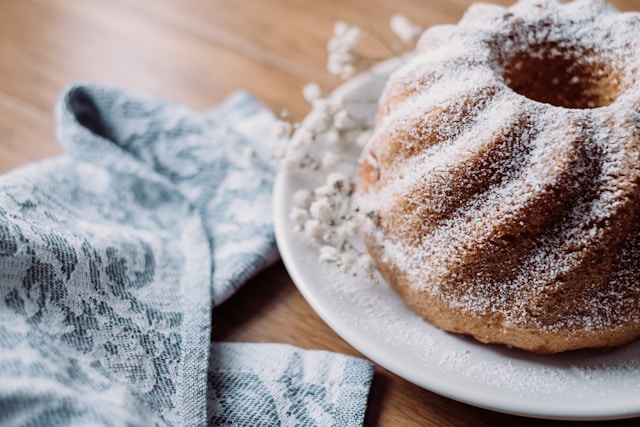Table of Contents
- Introduction
- History and Origins of Old-Fashioned Recipes
- Ingredients and Techniques in Old-Fashioned Cooking
- Benefits of Old-Fashioned Recipes
- Classic Old-Fashioned Recipe Categories
- Spotlight on Old-Fashioned Buttermilk Biscuits
- Adapting Old-Fashioned Recipes for Modern Kitchens
- Preserving and Sharing Old-Fashioned Recipe Traditions
- Conclusion
In today’s fast-paced world, where convenience often takes precedence over tradition, the allure of old-fashioned recipes has endured. These time-tested culinary treasures, passed down through generations, offer a comforting connection to our culinary heritage and a nostalgic taste of simpler times.
Old-fashioned recipes are more than just a set of instructions; they are a reflection of cultural traditions, regional influences, and the ingenuity of our ancestors. These recipes have withstood the test of time, proving their timeless appeal and enduring flavor profiles.
In this comprehensive guide, we’ll delve into the rich history and origins of old-fashioned recipes, explore the unique ingredients and techniques that define them, and celebrate the countless benefits they offer. We’ll also showcase classic recipe categories, provide tips for adapting these treasured dishes for modern kitchens, and discuss ways to preserve and share these culinary traditions for generations to come.
History and Origins of Old-Fashioned Recipes
Old-fashioned recipes have their roots in a time when cooking was a necessity and an art form, passed down from one generation to the next through oral traditions, handwritten recipe books, and hands-on experience in the kitchen. These recipes were born out of necessity, utilizing locally available ingredients and adapting to regional climates and cultural influences.
In the early days, recipes were often shared within tight-knit communities, with each household adding its unique twist and passing down the cherished family secrets. This process of culinary evolution gave rise to a rich tapestry of regional and cultural cuisines, each with its own distinct flavors and traditions.
As migration patterns shifted and people traveled to new lands, they carried their beloved recipes with them, adapting them to the available ingredients and blending them with the flavors of their new surroundings. This cross-cultural exchange further enriched the diversity of old-fashioned recipes, creating a culinary melting pot that continues to inspire and delight food enthusiasts today.
Ingredients and Techniques in Old-Fashioned Cooking
One of the defining characteristics of old-fashioned recipes is the use of simple, wholesome ingredients that were readily available to our ancestors. These ingredients often included:
- Locally sourced meats and vegetables: Fresh from nearby farms or personal gardens, these ingredients were the foundation of many old-fashioned dishes.
- Lard and butter: Rendered animal fats were commonly used for cooking and baking, lending rich flavors and textures.
- Buttermilk and cultured dairy products: Fermented dairy products were prevalent in old-fashioned cooking, adding tangy flavors and beneficial probiotics.
- Cast iron cookware: Sturdy and versatile, cast iron pots and pans were essential tools in the old-fashioned kitchen, imparting unique flavors and allowing for even heat distribution.
Traditional cooking techniques were also an integral part of old-fashioned recipes. Some of these time-honored methods include:
- Open-fire cooking: Skilled cooks mastered the art of cooking over open flames, using various techniques like spit-roasting, baking in dutch ovens, and tending to hearth-based stews and braises.
- Wood-fired ovens and stoves: Before modern electric or gas appliances, wood-fired ovens and stoves were the workhorses of the old-fashioned kitchen, requiring precise temperature control and timing.
- Pickling, canning, and preserving: These age-old methods allowed households to preserve the bounty of seasonal harvests, ensuring a steady supply of flavorful ingredients year-round.
While modern kitchens offer convenience and efficiency, there is something undeniably special about the flavors and textures achieved through these traditional ingredients and cooking techniques.
Benefits of Old-Fashioned Recipes
Beyond their nostalgic appeal and delicious flavors, old-fashioned recipes offer a range of benefits that are worth exploring:
- Nutritional value: Many traditional ingredients used in old-fashioned recipes, such as whole grains, leafy greens, and fermented dairy products, are packed with essential nutrients and beneficial compounds. Additionally, the cooking methods often preserved more of the natural nutrients found in ingredients.
- Connection to heritage and tradition: Old-fashioned recipes serve as a tangible link to our cultural and familial roots, allowing us to celebrate and honor the culinary traditions passed down through generations. Preparing and sharing these dishes can strengthen family bonds and foster a sense of belonging.
- Cost-effectiveness and sustainability: Many old-fashioned recipes were born out of a need to make the most of available resources, utilizing every part of an ingredient and minimizing waste. This mindset aligns with modern principles of cost-effectiveness and sustainability, making these recipes an environmentally-friendly choice.
- Flavor and depth: The slow cooking methods and thoughtful blending of ingredients in old-fashioned recipes often result in deeper, more complex flavors that simply cannot be replicated with modern shortcuts or processed ingredients.
By embracing old-fashioned recipes, we not only nourish our bodies but also connect with our heritage, promote sustainability, and savor the unmatched flavors of time-tested dishes.
Classic Old-Fashioned Recipe Categories
Old-fashioned recipes span a wide range of culinary delights, each with its own unique history and regional influences. Here are some classic categories that showcase the diversity and richness of these time-honored dishes:
- Breads and baked goods: From crusty sourdough loaves and fluffy buttermilk biscuits to hearty cornbread and decadent pies, old-fashioned baked goods have stood the test of time, comforting generations with their warm, comforting aromas and flavors.
- Comfort foods: Dishes like slow-cooked pot roasts, savory meatloaves, and creamy casseroles epitomize the essence of old-fashioned comfort food. These hearty, filling meals were designed to nourish and satisfy after a long day’s work.
- Preserves and pickles: Before modern refrigeration, pickling, canning, and preserving were essential for ensuring a year-round supply of flavorful fruits, vegetables, and condiments. From tangy dill pickles and zesty chutneys to sweet jams and rich marmalades, these old-fashioned preserves add zest and depth to any meal.
- Desserts: From rustic cobblers and rich puddings to velvety custards and decadent cakes, old-fashioned desserts are a testament to the ingenuity and creativity of our ancestors in the kitchen. These sweet treats were often reserved for special occasions, making them all the more cherished and indulgent.
Spotlight on Old-Fashioned Buttermilk Biscuits
One classic old-fashioned recipe that deserves a special spotlight is the humble yet divine buttermilk biscuit. These light, flaky, and buttery biscuits have been a staple in Southern cuisine for generations, gracing tables at breakfast, lunch, and dinner.
Buttermilk biscuits have their origins in the resourcefulness of early settlers, who used the tangy, fermented buttermilk leftover from churning butter to create these delectable quick breads. The acidity in the buttermilk reacted with the baking soda, creating a light and airy texture, while the rich buttermilk itself lent a delightful tanginess and moisture to the biscuits.
To achieve the perfect buttermilk biscuit, the key lies in following a few simple tips:
- Use cold ingredients: Cold butter and buttermilk are essential for creating those flaky layers and preventing the dough from becoming tough.
- Minimal handling: Overworking the dough can cause the gluten to develop too much, resulting in dense, tough biscuits. Use a light touch when mixing and folding the dough.
- Hot oven: A hot oven (around 450°F/230°C) is crucial for ensuring the biscuits rise properly and develop a golden, crispy exterior.
- Brush with butter: As soon as the biscuits come out of the oven, brush the tops with melted butter for an extra-rich, indulgent flavor.
Served warm, straight from the oven, with a pat of butter melting over the flaky layers, old-fashioned buttermilk biscuits are a true taste of Southern hospitality and a beloved reminder of simpler times.
Adapting Old-Fashioned Recipes for Modern Kitchens
While the allure of old-fashioned recipes lies in their traditional roots, adapting them for modern kitchens can be a simple and rewarding process. Here are some tips for successfully updating these treasured dishes:
- Adjust cooking times and temperatures: Modern ovens and stovetops often cook at higher temperatures than their wood-fired predecessors. Adjust cooking times and temperatures accordingly, and use an oven thermometer to ensure accurate readings.
- Substitute hard-to-find or outdated ingredients: Some old-fashioned ingredients, like leaf lard or certain heirloom varieties of fruits and vegetables, may be difficult to source. Feel free to substitute with modern equivalents, such as rendered pork fat or readily available produce varieties.
- Scale recipes for modern portion sizes: Many old-fashioned recipes were designed to feed large families or communities. Use simple math to scale the quantities up or down to suit your desired portion sizes.
- Embrace modern kitchen tools: While traditional cooking methods like open-fire cooking or wood-fired ovens add an authentic touch, modern tools like Dutch ovens, slow cookers, and stand mixers can streamline the process while still capturing the essence of old-fashioned flavors.
- Experiment with creative twists: While respecting the integrity of the original recipe, don’t be afraid to add your own creative spin. Incorporate modern flavors or swap out ingredients to cater to dietary restrictions or personal preferences, while still honoring the dish’s traditional roots.
By striking a balance between preserving the essence of old-fashioned recipes and adapting them to modern kitchens, you can ensure that these culinary treasures remain relevant and accessible for generations to come.
Preserving and Sharing Old-Fashioned Recipe Traditions
As the world continues to evolve and culinary trends come and go, it’s crucial to safeguard the legacy of old-fashioned recipes and ensure their traditions are passed down to future generations. Here are some ways to preserve and share these culinary gems:
- Document family recipes: Take the time to record and transcribe treasured family recipes, capturing not just the ingredients and instructions but also the stories and memories associated with each dish.
- Create recipe boxes or cookbooks: Compile your family’s old-fashioned recipes into a physical or digital cookbook, complete with personal notes, photographs, and anecdotes. These keepsakes can be cherished for years to come and shared with future generations.
- Host recipe swaps or community potlucks: Gather with friends, neighbors, or local community groups to share and exchange old-fashioned recipes. These events not only foster cultural exchange but also create opportunities for storytelling and preserving culinary heritage.
- Teach younger generations: Involve children and grandchildren in the process of preparing old-fashioned recipes. Share the stories behind each dish and pass along the techniques and skills needed to keep these traditions alive.
- Explore online recipe repositories: Contribute your family’s old-fashioned recipes to online databases or forums dedicated to preserving culinary heritage. These digital archives can ensure that these recipes remain accessible to a global audience.
By actively preserving and sharing old-fashioned recipes, we not only honor our ancestors but also ensure that these culinary treasures continue to enrich our lives and nourish our souls for generations to come.
Conclusion
In a world that often prioritizes convenience and speed, old-fashioned recipes offer a comforting respite, inviting us to slow down, savor the moment, and reconnect with our culinary roots. These time-honored dishes, steeped in tradition and infused with the flavors of bygone eras, are more than just a collection of ingredients and instructions; they are a living testament to the ingenuity, resourcefulness, and resilience of our ancestors.
Whether you’re preparing a beloved family recipe that has been passed down for generations or discovering a new-to-you old-fashioned dish, each bite is a celebration of our shared culinary heritage. Embrace the nostalgia, revel in the flavors, and take pride in keeping these traditions alive.
So, gather your loved ones, dust off those cherished recipe cards, and embark on a culinary journey through time. Let the comforting aromas of old-fashioned cooking fill your home, and savor the opportunity to connect with your roots, one delicious bite at a time.
If you have a treasured old-fashioned recipe that has been a part of your family’s traditions, we invite you to share it with us. Together, we can ensure that these culinary gems continue to be cherished, celebrated, and passed down for generations to come.

